In this article, I’ll list the 6 largest cities in Sweden and provide some interesting facts about them.
Sweden is a country of about 10 million people known for its beautiful green spaces and lakes, closeness to nature, contribution to pop music, coffee culture, sustainability, and commitment to the world of design and innovation.
It is where IKEA, H&M, and Spotify were founded, and is famously known as the birthplace of the supergroup ABBA, one of the most successful pop music acts in history.
Sweden has so much more to offer. Let’s get to know this beautiful country that attracts many visitors each year.
The 6 Largest Cities In Sweden
- Stockholm
- Gothenburg
- Malmö
- Uppsala
- Vasteras
- Orebro

The 6 Largest Cities In Sweden
1. Stockholm
Stockholm is perhaps the most well-known city in Sweden and is also the country’s capital. It is the largest city and center of the Swedish economy, politics, and culture.
It is considered the heart of Scandinavia and attracts many visitors yearly. Settlements have existed since the Stone Age, but the city was officially established in 1252.
Often called the “Venice of the North,” Stockholm is a city with a unique layout because it is virtually on the water, spread out over 14 islands that are connected by more than 50 bridges, with each area having its own charm and personality.
It is located in southeast Sweden, on the banks where Lake Malaren goes into the Baltic Sea.
Stockholm is known for being a modern, urban metropolis with a slightly more relaxed vibe than other cities. It is one of the cleanest cities in Europe and features an eclectic mix of the old and new architecture.
It is home to one of the largest and most well-preserved medieval and historic districts in all of Europe, the Gamla Stan.
The Gamla Stan, or Old-town Stockholm, is itself a living museum. It dated back to the city’s founding in the 13th century, but most of its yellow, red, and ocher-colored buildings were built in the 1700s and 1800s.
Narrow pedestrian-friendly and bike-friendly cobblestone streets, picturesque alleys, bistros, cafes, restaurants, and cute boutiques, and its many important historical sites make this charming area a great place to spend time in.
Gamla Stan is where the Baroque-style, 18th-century Royal Palace of Sweden is located, which is the official residence of the Swedish Royal Family. Several museums are found inside the palace and are open to the public.
The oldest church in Stockholm, the Storkyrkan (“The Great Church”), was built in 1279 and featured Brick Gothic architecture. A beautiful sculpture made of wood, St. George and the Dragon, can be found here as well as a clock tower built in 1743 that stands over 216 feet tall.

The Medieval Museum, The Royal Armoury, and the Nobel Prize Museum are also found in this area.
The Stockholm Metro is also a unique work of art. It is said to be the longest art exhibit in the world at over 68 miles long because 90 of its 100 stations feature murals, mosaics, installations, sculptures, engravings, and other artworks from over 150 contributing artists.
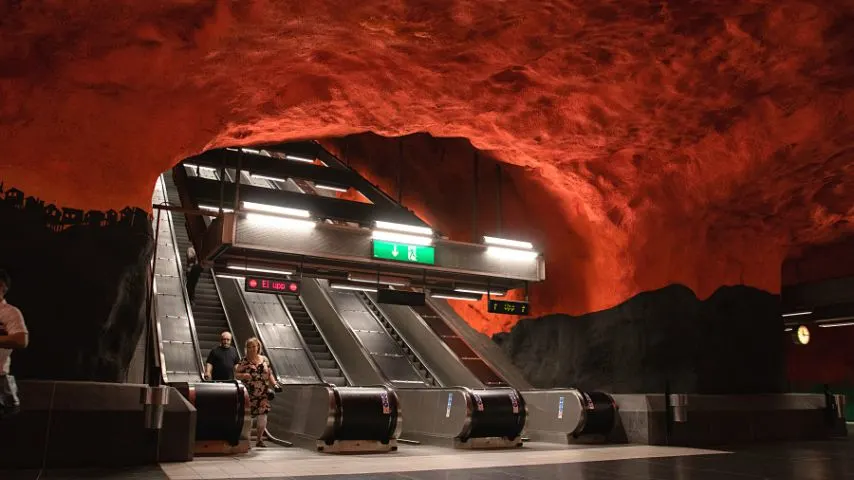
If you’re unconvinced that this city is artistic and is driven by design, traveling through the metro is sure to change your mind.
Stockholm is also a great city to experience Sweden’s coffee culture, called fika. Fika means having coffee with a sweet treat and is a way to relax, meet and bond with a group of people.

This tradition’s done by both old and young, rich or poor, all across the country. It is known as the great equalizer and a great primer to Swedish life and culture.
Aside from the wealth of historical sites and experiences one can get here, Stockholm is also known as a welcoming and inclusive city.
People are friendly and open, and LGBTQI rights and gender equality ideals are openly upheld here, making it one of the most progressive and liberal cities in the world.
- Population: 980,000
- Land Area: 188 km2
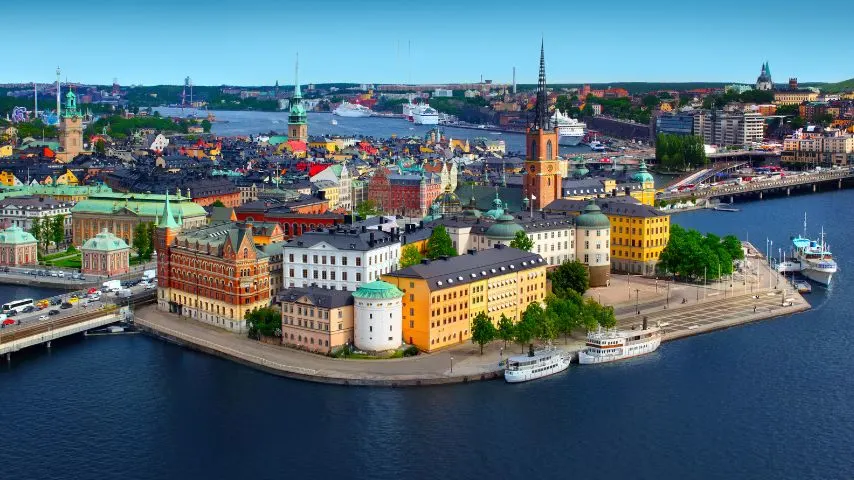
2. Gothenburg
Gothenburg is the second largest city in Sweden and is located along the outlet of the Göta älv river on the western coast of Sweden.
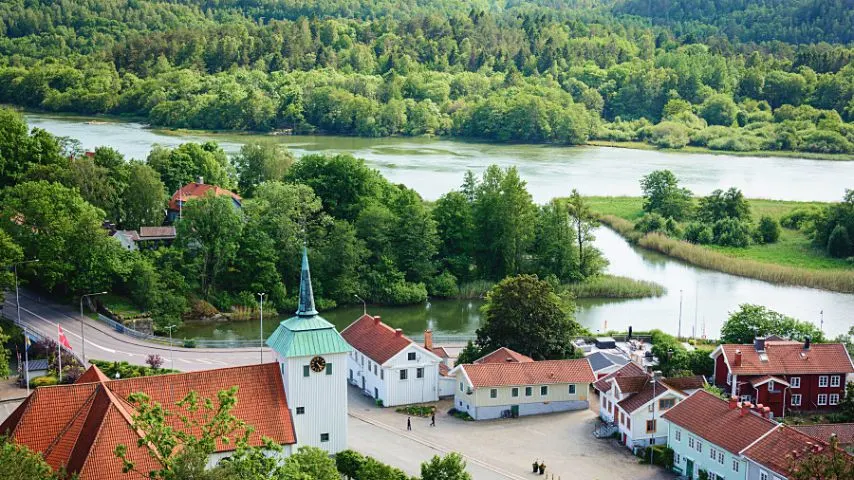
It was originally founded around 1603, but like Stockholm, early settlers were already in the area long before that.
It was destroyed in the war with Denmark in 1611-1613 but was refounded in 1619 by King Gustaf II Adolf, and it became an official city in 1621.
Though it was officially founded as a city by Sweden, its earlier success and development as a city were heavily influenced by the Dutch, which is why we see evidence of Dutch planning in its streets as well as Dutch-style canals in the city. The planning of the city was based on the canal system in Amsterdam.
Gothenburg was an important city in the 1600s. It was fortified and protected because it was an important and strategic port, as Sweden’s only access to the Atlantic Ocean and the North Sea at the time.
Gothenburg initially flourished as a commercial fishing hub and major port of trade. In 1731, the founding of the Swedish East India Company made the city thrive with unique trade opportunities with China and the rest of Asia.
In the 19th century, the city became industrialized, and in 1927, Volvo was founded in the city, bringing innovation, jobs, and opportunities.
The Port of Gothenburg is the biggest port among the Nordic countries. It is still an important seaport today due to its advantageous location in the Scandinavian countries.
Still, other industries such as manufacturing, research, and technology, as well as a growing tourism industry, all significantly contribute to its economy.

Despite all the industrialization and modernization, it remains true to its proud fishing heritage. If you love seafood, you will be happy eating in Gothenburg with its fresh, locally-sourced, high-quality seafood that people worldwide come to experience.
Gothenburg has a wide array of choices, from casual eateries to Michelin-starred restaurants, and a foodie will not run out of things to eat and experience here. Aside from food and seafood, Gothenburg also has a thriving craft beer scene.
Liseberg is an amusement park built in the 1920s that remains one of the main attractions of the city. It is the biggest amusement park in Scandinavia and offers rides, games, good music, food, and gardens.
Its wooden rollercoaster is considered the best in the world, and AtmosFear is the highest free-fall ride in Europe.
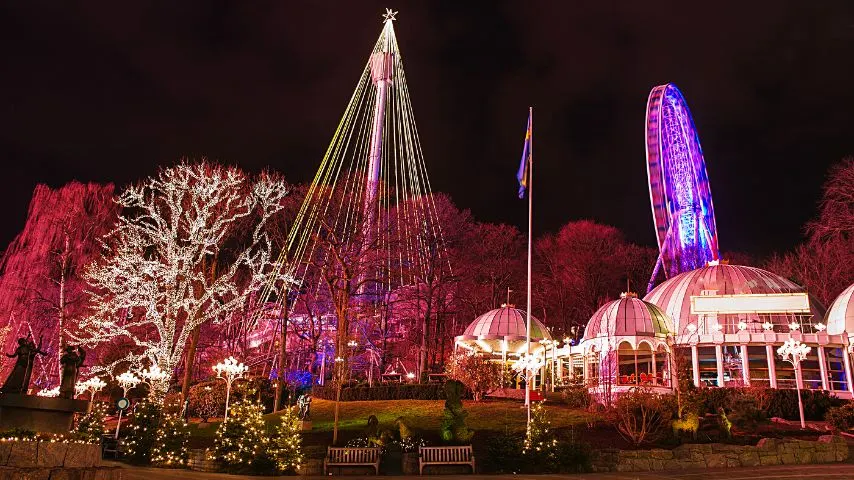
Gothenburg also hosts a lot of cultural events like the Gothenburg International Film Festival, the largest in Scandinavia and North Europe.
- Population: 590,000
- Land Area: 447.8 km2
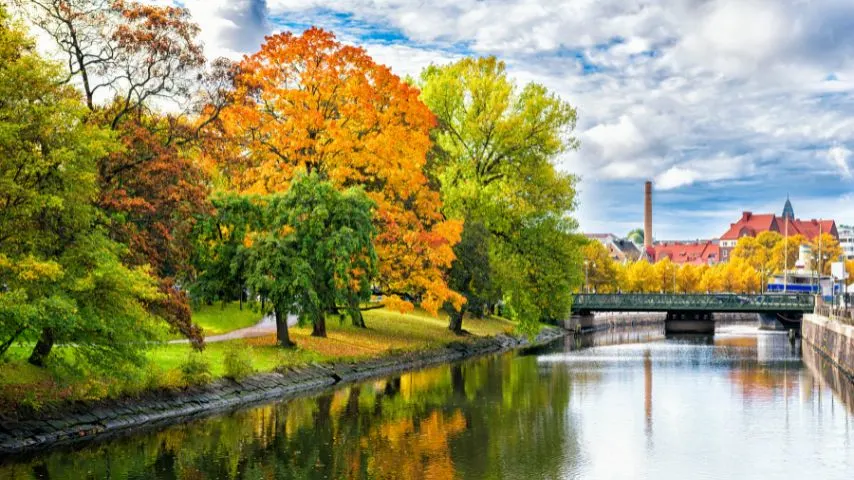
3. Malmö
Malmö is the third-largest city in Sweden and is named the happiest city in one of the happiest countries in the world.
It is a coastal city located in the far southwest of Sweden, across the Oresund Strait from Copenhagen in Denmark. It was founded in the 1200s and was originally part of Denmark before becoming part of Sweden in 1658.
It is known as being a diverse, multicultural city, making it one of the most eclectic in all of Scandinavia. Inhabitants from over 150 countries who speak over 100 languages migrated here and made Malmö their home.
Because of this, there are various cultures, religions, mindsets, and backgrounds in this city that have undoubtedly contributed to why the city is so innovative and global.
It is one of the fastest-growing Swedish cities and is also one of the youngest, with an average age of 38. Young people flock to this city because of its educational and employment opportunities.
Malmö has a thriving startup scene and is considered one of the most inventive cities in the world, which makes it a great entrepreneurial city.
According to Forbes, it has one of the highest patent applications per capita in the world and is way up there with the likes of San Francisco. A lot of its industries focus on green technology and innovation, healthcare and life sciences, and environmental sustainability. Malmö is also known for being one of the most bike-friendly cities.
Its diversity and its proximity to another world-class dining city, Copenhagen, have made Malmö a thriving culinary hotspot. Food options range from humble food stalls to Michelin-starred eateries.
Malmö’s Old Town, Gamla Staden, is the city’s historic heart and the oldest part. Here you will find historic buildings and architecture amidst cobblestone streets and picturesque streets that take you back to its medieval history.
Stortorget is Malmö’s historic town square, which is also its oldest. It is surrounded by many historical buildings like the historical city hall, Malmö Radhus, constructed in the 1500s when Malmö was among the biggest cities in all of Scandinavia.

The Kocksa Huset, and the Apoteket Lejonet, the oldest pharmacy in Sweden, can also be found here.
Steps away from the square, the Lilla Torg was created in 1590 as a sort of extension of Stortorget. It is still used as a marketplace today and has lots of cozy, cute restaurants, shops, and cafes and is a popular meeting place for people, especially in the summer.
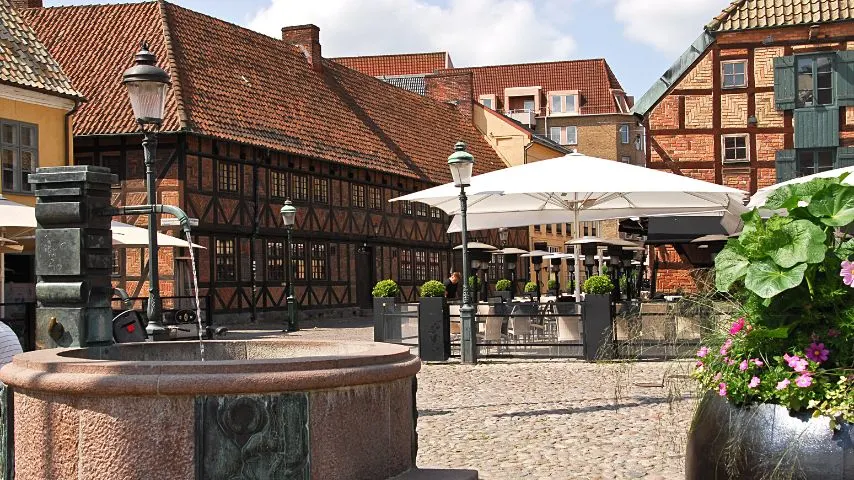
- Population: 350,647
- Land Area: 76.81 km2
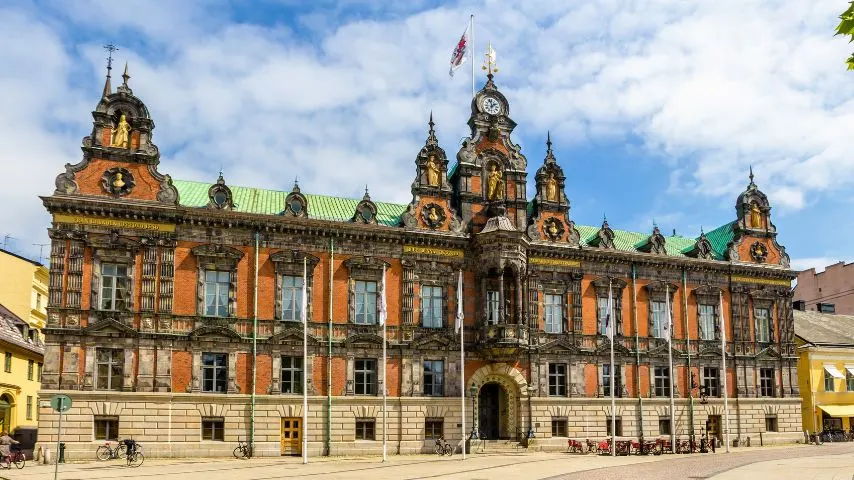
4. Uppsala
Uppsala is Sweden’s fourth largest city and is known for its world-class universities and its beautiful cathedral, which is the seat of the Archbishop of Uppsala, the leader of the Church of Sweden, in an unbroken succession beginning from the 1100s.
Uppsala is also one of the oldest cities in Sweden and is located in the eastern central portion of the country, 40 miles northwest of Stockholm.
Established in 1477, Uppsala University is the oldest university in all of Sweden. It’s a public research university considered one of the top universities globally. It’s also sometimes known as the “Cambridge of Sweden”.
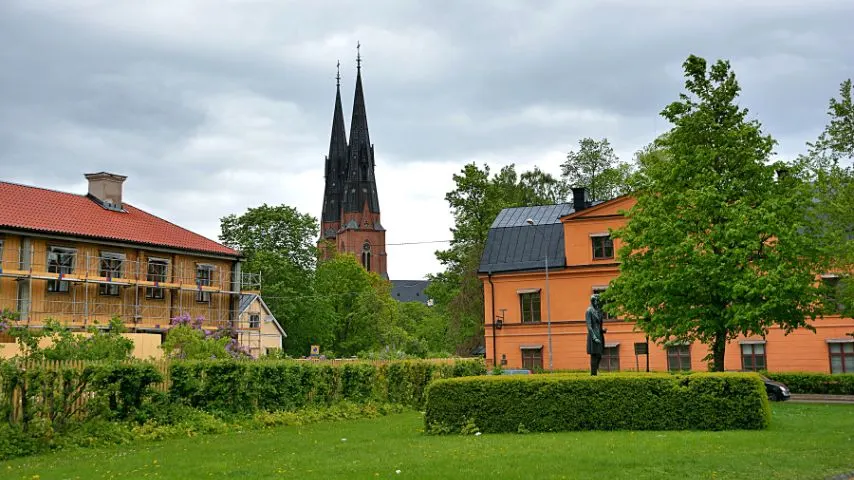
Uppsala Cathedral is a beautiful, gothic-style cathedral that is the tallest in the Nordic countries and is considered one of the most magnificent. It is the seat of the national Church of Sweden and the Archbishop of Uppsala.
It started out as part of the Catholic Church before it became part of the Lutheran tradition in the 1530s. It is also the burial site of many of Sweden’s monarchs, like King Gustav Vasa and John III.
Other important people like Carl Linnaeus, the “Father of Modern Taxonomy”, and other scientists, theologians, and archbishops are also buried there.
The main building of the library of Uppsala University, Carolina Rediviva, houses one of the most famous documents in the world, the Silver Bible, written in the 6th century.
It is a Gothic translation of the four Gospels from Greek, written by Bishop Wulfila (311-383), who is said to have been the inventor of the Gothic alphabet.
It is the oldest surviving Gothic manuscript in the world, and much of what is currently known about the Goth language is largely due to the text of the Silver Bible.
The Linnaeus Museum documents botanist Carl Linnaeus’ home life and achievements in science. Linnaeus’s Hammarby, a few miles from the city, is a beautiful botanic garden and museum, originally bought by Carl Linnaeus and his family as a summer home.
This is where you can appreciate the late botanist’s work. Over 40 species of his plants from the 18th century remain and are cultivated in the gardens.
Uppsala is an important city in academia and business, and many important innovations came from here.
The world’s youngest-ever professor of nanotechnology, Maria Stromme, and her team discovered Upsalite in this city. Upsalite is an important moisture-absorbing compound with many applications in the pharmaceutical industry as well as the cosmetics industry.
Uppsala is a university town (one-third of its population are students), which means the city is young and energetic. It is a city rich with history that dates back to the Viking age and Iron Age.
- Population: 177,000
- Land Area: 48.77 km2

5. Vasteras
The fifth largest city in Sweden is Vasteras, located about 62 miles west of Stockholm in Central Sweden. It is another coastal city situated on the shores of Lake Malaren.
Vasteras is most famous for being H&M’s birthplace. The first ever store of the popular clothing retailer was opened in the center of town in 1947.
Anundshög is an ancient burial mound created between 500-1050 A.D. and is the largest one in Sweden. You can explore the area and go for walks with their available audioguides, contemplate history, and enjoy Fika at the café. There are also guided tours offered in the summer season.
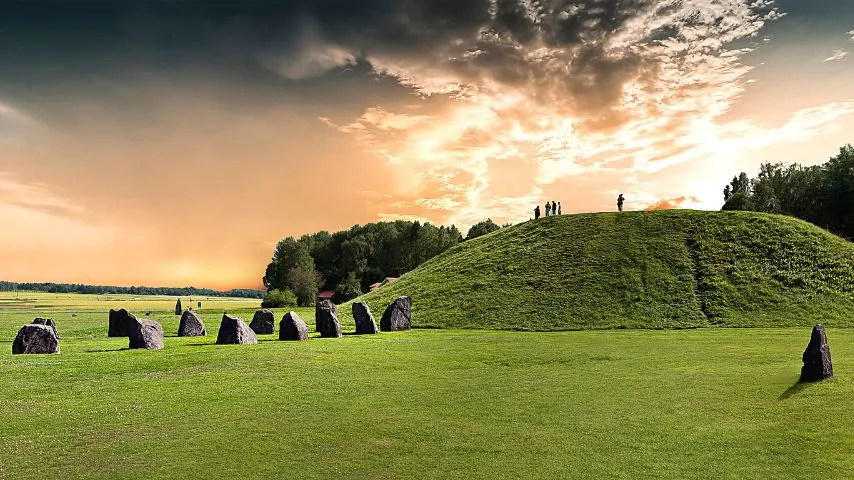
The Vasteras Cathedral, with Scandinavian Gothic architecture, dates back to the 13th century and is one of the city’s landmarks. It is the burial site of Erik XIV, the King of Sweden, from 1560-1568.
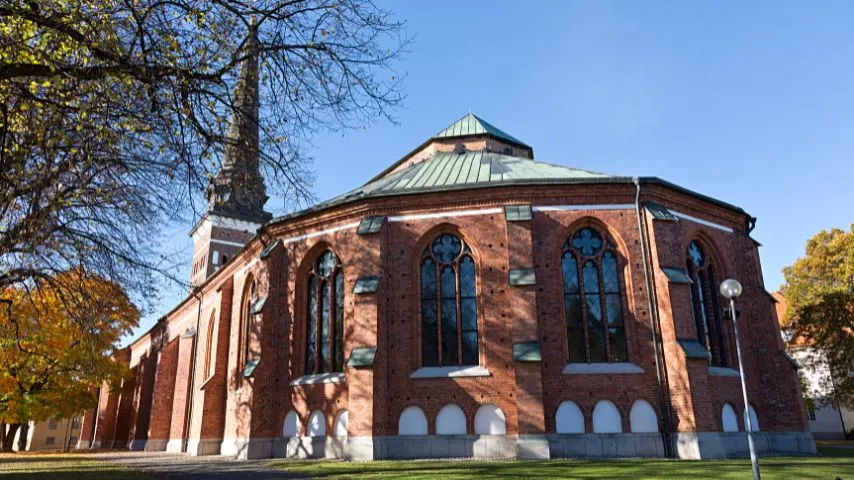
This same king, before his death, was imprisoned in Vasteras Castle for more than one year because he was believed to be mentally unstable. He was eventually murdered and then buried in the cathedral. King Gustav Vasa built Vasteras Castle in the 16th century.
The Old Town of Vasteras, Krykbacken, is a quaint, charming area filled with well-preserved, colorful wooden and stone houses that today house many of the city’s local artists and artisans.
The Vallby Open Air Museum is a 37-acre outdoor museum that recreates life in this region of Sweden from the 1600s to the 1900s through a collection of historic houses, buildings, gardens, farming areas, and historic landscapes, as well as Sweden’s native animal breeds.
It is a great place to visit to dive into the culture of this particular area of the country.
- Population: 127,799
- Land Area: 52.94 km2

6. Orebro
And finally, Orebro is the sixth largest city in southcentral Sweden, between Gothenburg and Stockholm.
Its city center is considered one of the most beautiful in the entire country, and it is also known as the birthplace of one of the members of the Swedish Royal Family, Prince Daniel, who is the husband of the Crown Princess of Sweden, Princess Victoria.
Built on an islet in the middle of the city, surrounded by moats, Orebro Castle is a medieval castle that used to be a stronghold, fortress, and prison for the city of Orebro.
The city used to be an important access point to the inner parts of the country, and Orebro Castle likely played a huge role in protecting the city. When King Gustav Vasa took the throne, the city and the palace rose to prominence.
Today the castle offers guided tours, ghost walks, treasure hunts, and other activities, and features a museum where you can learn about its history and notable former residents.
Orebro is also home to Orebro University, its origins tied to the Orebro branch of Uppsala University, and home to Orebro University Hospital.
Nature can also easily be accessed from the small city of Orebro. Marked trails for hiking, cycling, and kayaking are available nearby.
Tiveden National Park, known as Sweden’s southernmost wilderness, is a beautiful national park with over 2,000 hectares of forest, hilly terrain, and lakes perfect for hiking, biking, exploring, and even swimming and canoeing, that is easily accessible from the city of Orebro.
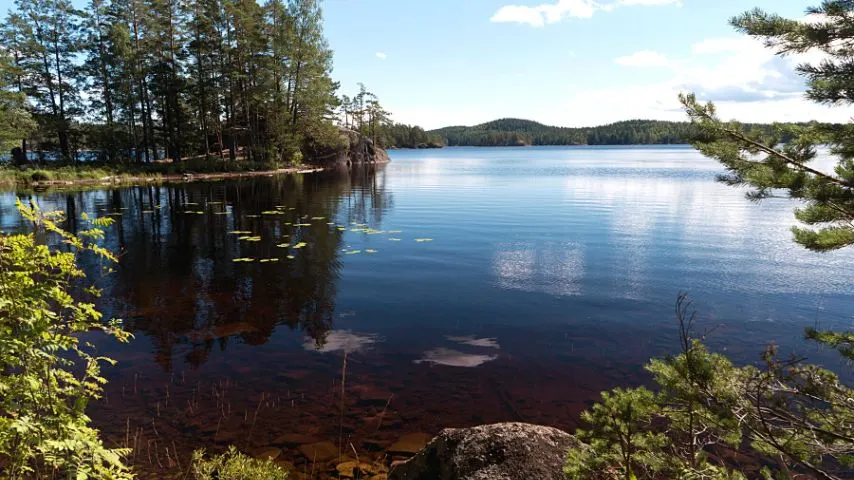
- Population: 155,989
- Land Area: 1,380 km2
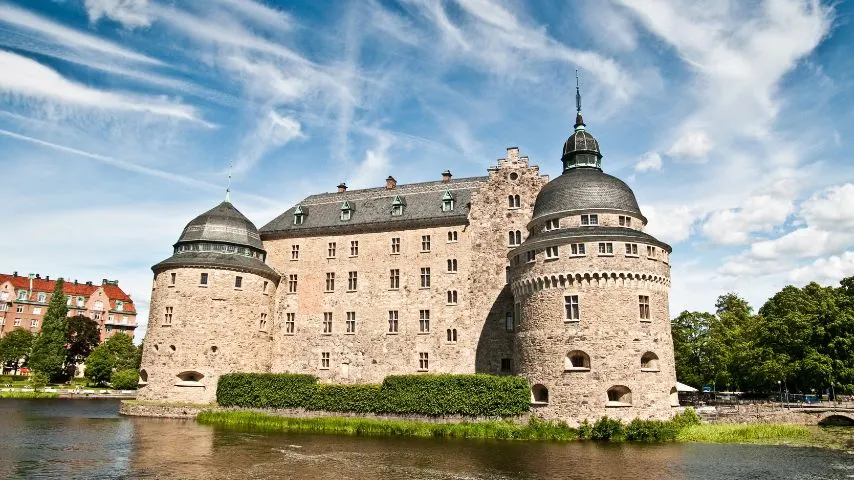
Read Next: The 13 Very Best Places to Live in Sweden
Conclusion to The 6 Largest Cities In Sweden
The largest cities in Sweden include Stockholm, Gothenburg, Malmö, Uppsala, Vasteras, and Orebro.